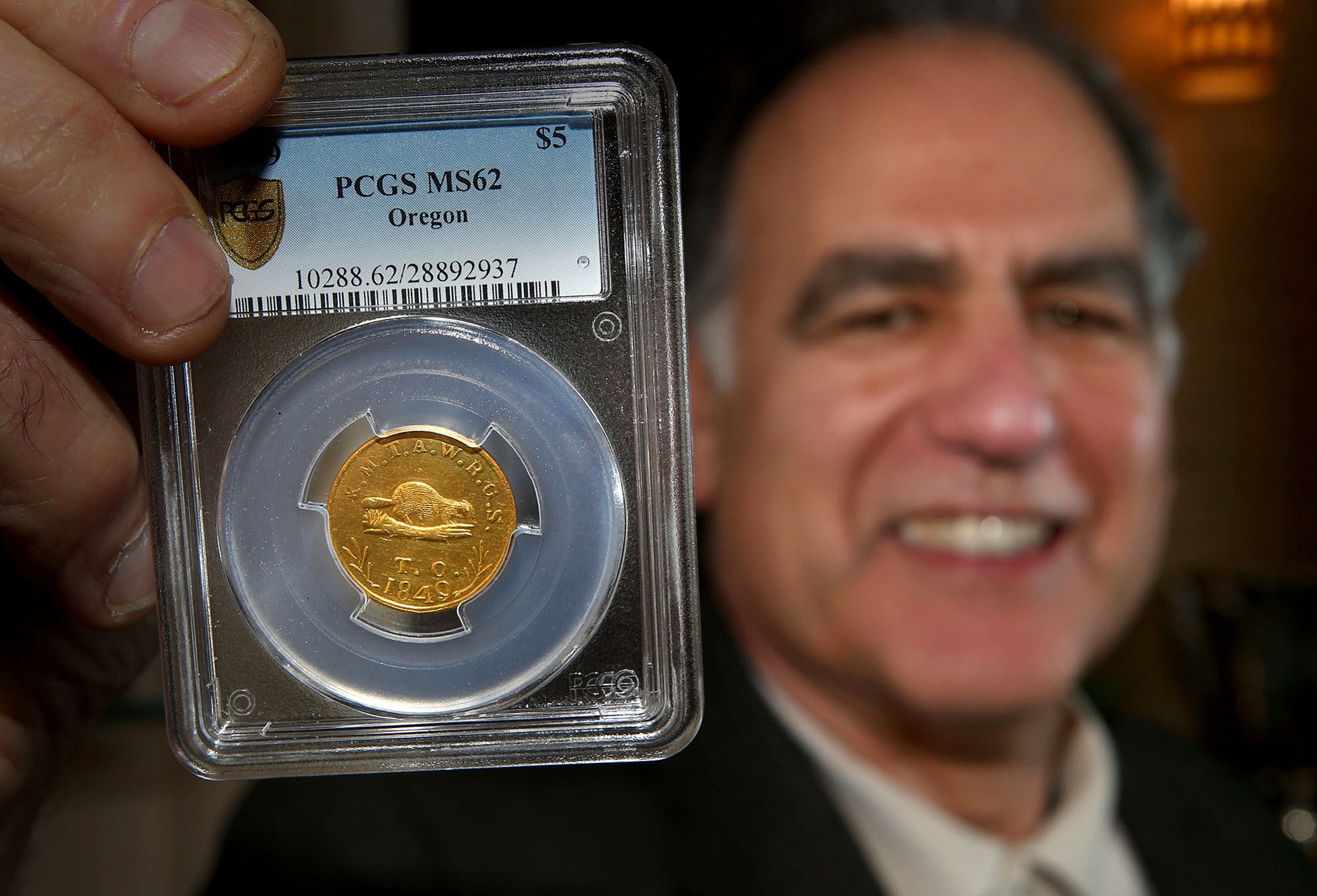EUGENE, Ore. — Owning rare, expensive coins is nothing new for David Nelkin, who regularly buys and sells them for a living.
But Nelkin, the owner of Eugene Coin and Jewelry, is particularly proud these days about his purchase last year of a high-priced rare coin from Oregon’s era before statehood.
Now, he’s about to show the 165-year-old “Beaver Coin” for the first time since he bought it.
“I’m just really ecstatic to own it,” Nelkin said. “It’s like owning a fabled piece of art. I look at it that way. And because I’m from Oregon, it has that extra pull.”
Nelkin bought the $5 gold coin in August from a private collector, who had paid $257,000 for it at an auction three months earlier.
The coin was made in 1849, a decade before the Oregon Territory became a state.
It’s unknown how many of the Oregon gold coins remain in existence. But fewer than 50 out of the 6,000 $5 coins made in Oregon City in the 19th century have been certified as authentic, Nelkin said.
Nelkin declined to say how much he paid the collector, except that it was more than $257,000.
“It’s not about the money for me,” Nelkin said. “It’s about the coin. The art of the coin. The preservation of the coin, and its connection to the history of Oregon.”
On display this week
Nelkin, who keeps the coin in a bank safe deposit box, hasn’t displayed the collectible since he bought it.
However, this week Nelkin will display it at the American Numismatic Association’s “National Money Show” in Portland. The three-day event starts today.
Made from about a quarter-ounce of pure gold from the California gold rush, the coin was among the “Beaver Coins” or “Beaver Money” produced by the private Oregon Exchange Co. mint.
On one side, the coin has an image of a beaver standing on a log. The engraving on the other includes the words “Oregon Exchange Company” and “Native Gold.”
In 1849, little federal money circulated in Oregon, and the territory needed a more efficient way to conduct commerce than bartering with beaver skins, wheat and other commodities, or using gold dust, according to the 1932 article “Pioneer Gold Money,” written by Leslie Scott and published in the Oregon Historical Quarterly.
A group of businessmen formed a nonprofit association, the Oregon Exchange Co., and started a private mint, Scott wrote. The mint produced the $5 gold pieces and 2,850 $10 gold coins for six months until September 1849, when territorial Gov. Joseph Lane — after whom Lane County is named — declared the operation illegal.
Because of their purity, many of the “Beaver Coins” were sold and melted for their gold after the federal mint in San Francisco began producing currency in 1854, Nelkin said.
Information about the early owners of the “Beaver Coin” bought by Nelkin doesn’t exist, he said. But a written record emerged in 1963, when the coin started to be bought and sold by coin collectors.
Nelkin, the eighth owner since 1963, first considered buying it in April through an online auction. He even asked the auction house to mail the coin to him so he could examine it. But Nelkin stayed on the sidelines because of steep bids.
Still, Nelkin had second thoughts after the collector bought the coin.
In August, Nelkin met the collector at a coin convention in Chicago. Nelkin once again examined the coin and decided that he had to buy it, even at a higher price. “I decided that it was a once in a lifetime opportunity for me,” he said. “I guess you could say it’s the Holy Grail.”
Nelkin, 63, said he has no immediate plans to sell the coin. “When I get to be of a certain age and I want to pass it along to my children, all of those factors may come into play,” he said. “But I have no foreseeable plan for it, but to share it and show it and be its new caretaker.”



